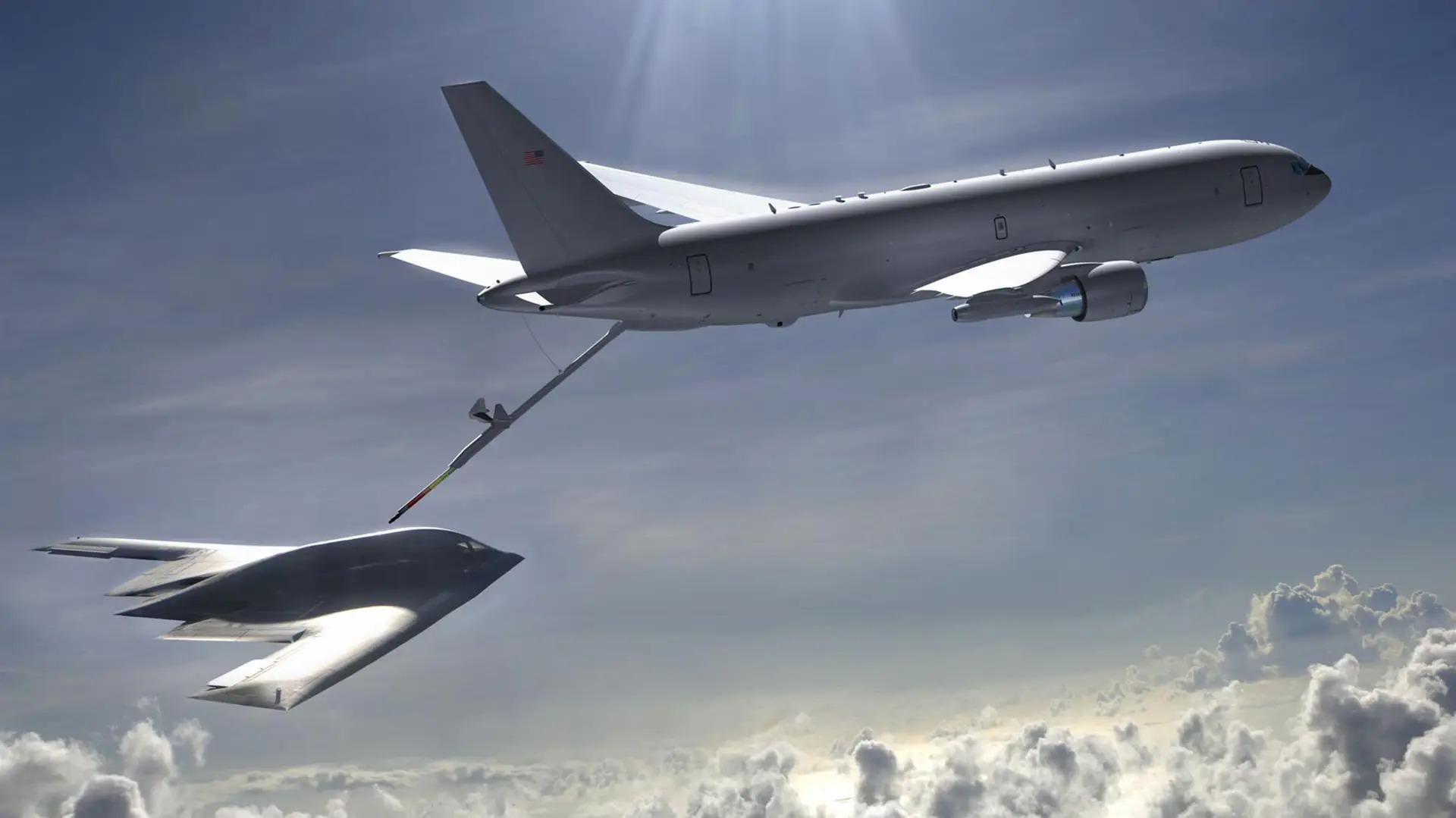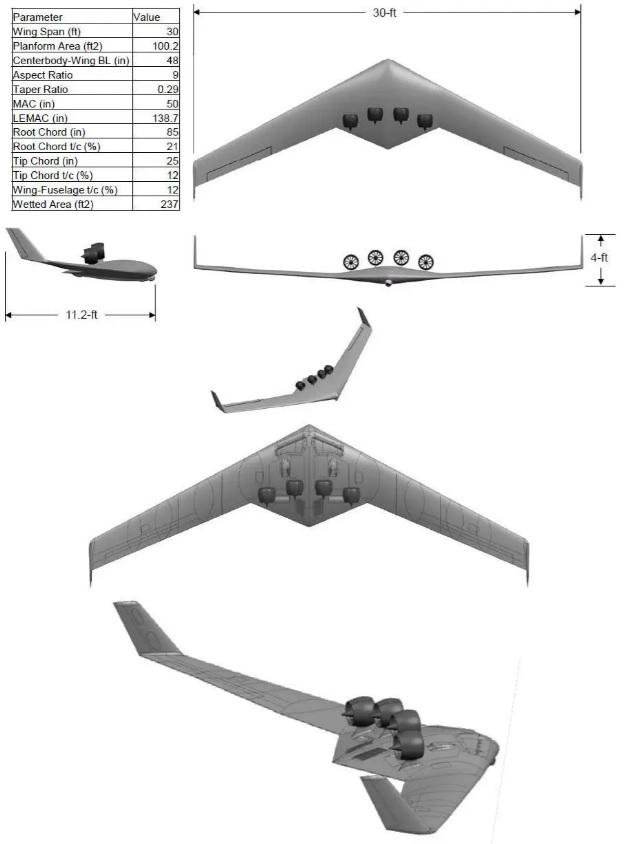Pentagon plans to create aerial platform for charging drones PHOTO
The Defense Advanced Research Projects Agency, or DARPA, the Pentagon’s emerging technologies specialist, is looking into outfitting aerial refueling tankers as “Airborne Energy Wells” to recharge battery-powered drones. The agency has put out a request to industry players as it seeks information on the feasibility of using modified manned tanker aircraft to wirelessly transmit power, via laser beams, to unmanned aerial vehicles, in what could be a potentially ground-breaking development.
DARPA recently published a request for information (RFI) that calls for industry feedback on the proposal to outfit the Air Force’s existing KC-135 and KC-46 Pegasus tankers with “an underwing power beaming pod,” although it doesn’t rule out other options, too, The Drive reports.
Such a pod would be required to contain a continuous-wave laser generating at least 100 kilowatts, and there’s a requirement for a thermal control unit that integrates the laser into the tanker. The solution would also be expected to provide beam forming and steering of the laser energy “covering a nearly hemispherical field of regard,” to ensure the power gets to where it’s needed.

There is also a requirement to find out more about ways of generating the power to start with, aboard the tanker, using either existing or new equipment.
More broadly, the RFI also wants to know from firms whether they consider themselves able to build and test the required components and subsystems for the Airborne Energy Well, as well as to adapt existing hardware. The deadline for submissions is July 11.
As the primary driver behind the Airborne Energy Well initiative, the RFI outlines the need for UAVs to be able to fly further and for longer, replicating the advantages conventional tanker aircraft provide to the manned fleet. In turn, the drones would be able to have reduced organic energy storage, allowing them to carry more weapons or sensors, for example, or they would just benefit from extended endurance without having to land. The all-electric drones that are in line to benefit from Airborne Energy Wells currently tend to be relatively small in size. However, larger UAVs are increasingly on the agenda and having the ability to top up battery cells while airborne could help address the problems of endurance that relate to electric drones.
In the short term, the Airborne Energy Well likely wouldn’t need to recharge large aircraft, but over time larger and more complex types — both manned and unmanned — are set to become battery-powered. Meanwhile, both DARPA and the Air Force are increasingly interested in the potential of electric vertical take-off and landing (eVTOL) designs, which will also continue to evolve and grow in size as batteries become smaller and more efficient.
Of course, the Airborne Energy Well would also require drones that were compatible, with some means of receiving the directed energy generated by the tanker. There are other potentially significant hurdles, too, including the effects of atmospheric interference from clouds and precipitation on laser-beamed power.

With all this in mind, very high and slow-flying aircraft that run on electricity and fly for very long durations, standing in for communications satellites or carrying a sensor high aloft, might be the best ‘customer’ for this concept. It would also mean the power is beamed up, through thinner atmosphere with less weather, than down, greatly reducing a major technological hurdle of such a concept.
In the short term, the Airborne Energy Well likely wouldn’t need to recharge large aircraft, but over time larger and more complex types — both manned and unmanned — are set to become battery-powered. Meanwhile, both DARPA and the Air Force are increasingly interested in the potential of electric vertical take-off and landing (eVTOL) designs, which will also continue to evolve and grow in size as batteries become smaller and more efficient.
Still, major challenges beyond beam propagation and atmospheric distortion exist, including major thermal issues, as well as the size and weight ones for both sender and receiver, just to name a few. These are not unique only to this concept. You can read all about the realities and myths surrounding directed energy military applications today in this past feature of ours.
Ultimately, however, if the provider and receiver subsystems could be perfected, then the Airborne Energy Well could become part of a much bigger and more ambitious energy-transfer network, DARPA suggests.
“Responses to this RFI will be used to inform and explore future programs that advance the ability of airborne assets to dynamically move energy across a network of aircraft equipped with energy beaming and receiving technologies,” the RFI states. “This Airborne Energy Well is a potential component of a more expansive energy web of power generation, transfer relays, and receiving solutions, enabling the Department of Defense to dynamically allocate energy resources to more flexibly deliver military effects.”

While the RFI specifies potential incorporation for in-service tankers, there’s no reason why the same technologies couldn’t, in the future, be inserted into other manned and unmanned platforms, too. Indeed, drones are also now poised to start flying conventional refuelling missions, and larger ones might also be able to recharge their battery-powered counterparts. Certain future manned aircraft are likely to also be offered in unmanned or optionally piloted versions, too, and these could well lend themselves to becoming ‘recharging stations’ for other UAVs.
Furthermore, such technologies could also start to provide additional energy for aircraft equipped with systems, like lasers, which consume enormous amounts of power. In this way, the Airborne Energy Well, or similar, could have uses beyond recharging for propulsion of electric aircraft.
DARPA notes that, while commercial enterprises began adopting wireless energy transfer some time ago, for certain applications, the military, in general, has been slow on the uptake.
Nevertheless, the Pentagon has at least been looking at the potential of this kind of technology for a while.
Back in 2011, the Air Force Research Laboratory’s Revolutionary Munitions Directorate funded NASA research on laser power-beaming systems. Foreshadowing the Airborne Energy Well, this study looked at “long-range optical ‘refuelling’ of electric platforms such as micro unmanned aerial vehicles (MUAV).”








